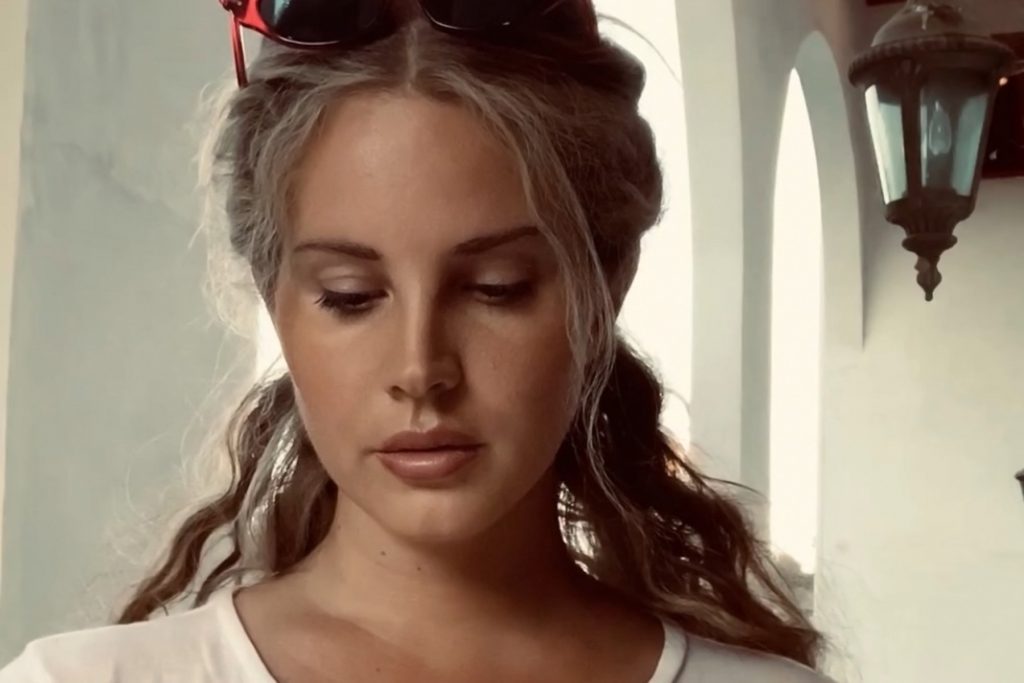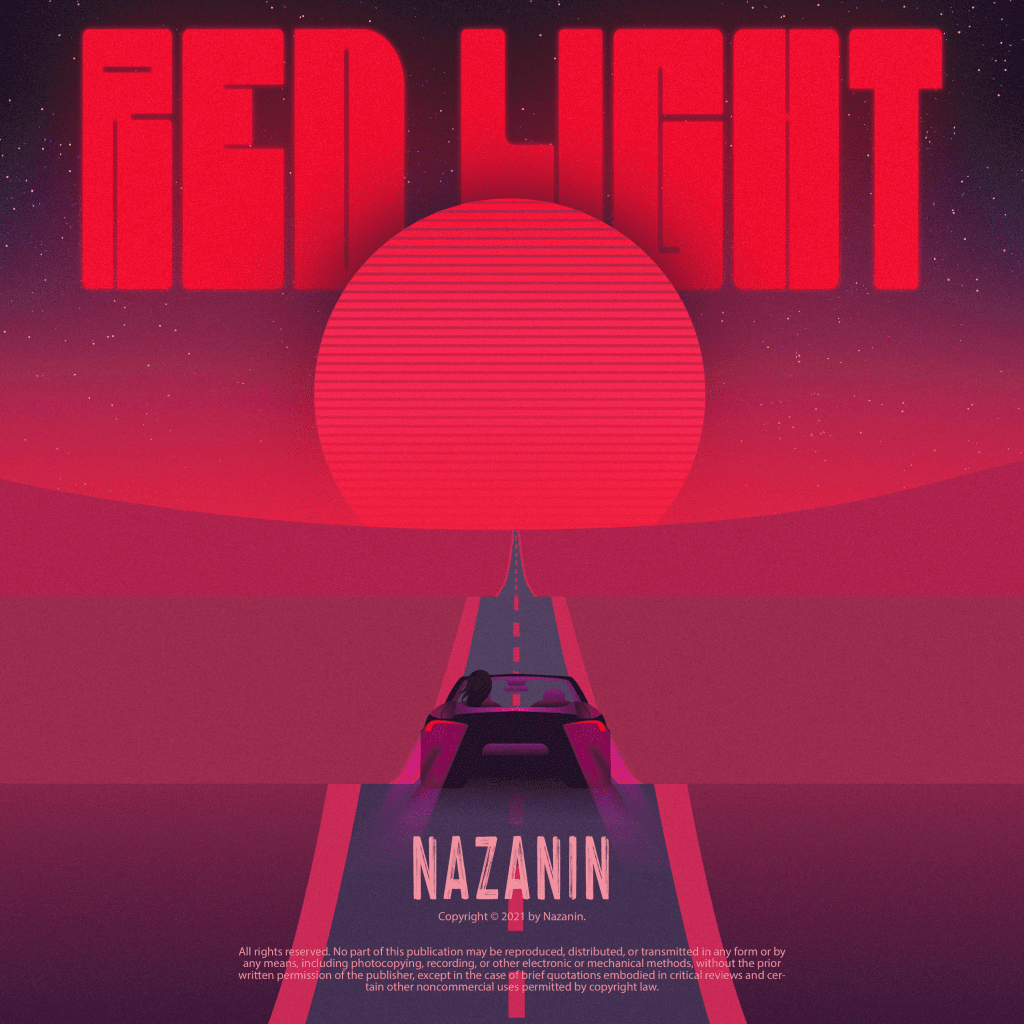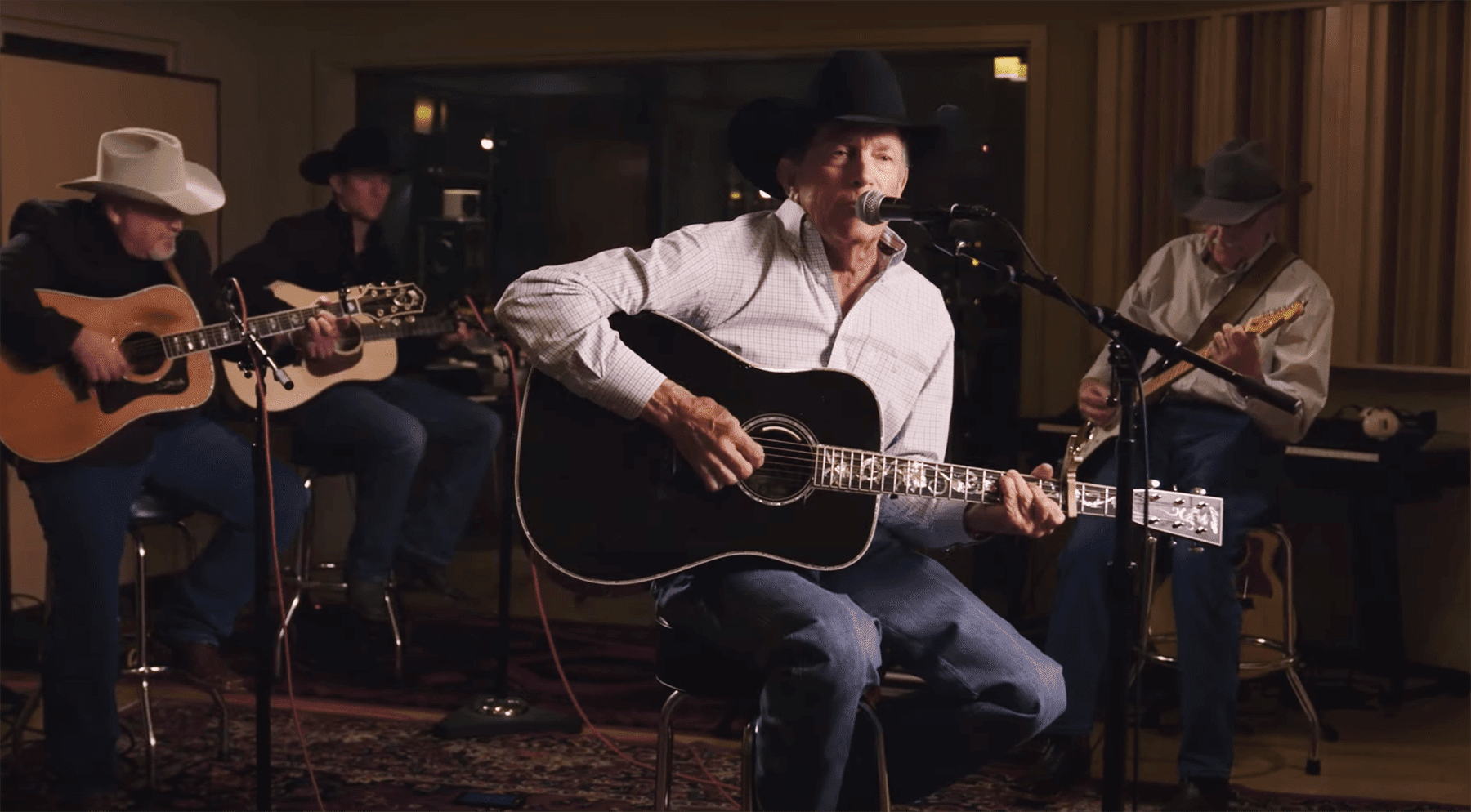
Lana Del Rey’s ‘Chemtrails Over the Country Club’ Is a Somber American Travelogue
“I’m ready to leave L.A., and I want you to come,” Lana Del Rey sings on her latest album Chemtrails Over the Country Club. “Eighty miles north or south will do.” It’s an escapist fantasy the pop singer has entertained before: stealing away from the City of Angels in a pickup truck that no one recognizes. But thankfully – for us, at least – she never acts on her wishes. On Chemtrails, her most subdued and introspective album thus far, she soundtracks the death of the American dream right from the heart of Hollywood, just as she did on her previous effort, 2019’s electrifying Norman Fucking Rockwell! And while it may not have as many grandiose showpieces as its older sibling – no nine-minute “Venice Bitch” to be found here – Chemtrails is every bit as sharp and prescient of a cultural artifact from pop’s premier Cassandra. After all, when that fireball hurtles past Hawaii towards the West Coast, as Lana foresaw on NFR’s “The Greatest,” who’s going to be there to sing torch ballads over the silent, ashen remains of Los Angeles? Lana Del Rey, of course. Where else would she be?
blogherads.adq.push(function () {
blogherads
.defineSlot( ‘medrec’, ‘gpt-dsk-tab-article-inbody1-uid0’ )
.setTargeting( ‘pos’, [“mid-article”,”mid”,”in-article1″,”mid-article1″] )
.setSubAdUnitPath(“music//article//inbody1”)
.addSize([[300,250],[620,350],[2,2],[3,3],[2,4],[4,2]])
;
});
Though Del Rey’s overall project has remained remarkably consistent throughout her career, her growing disillusionment with fame, and with this country’s prevailing iconography of wealth and success, has loomed large as the national mood has grown more dire. Sure, there was always danger lurking behind the Kennedy smiles and gray mansion luncheons featured on Born to Die and her other early works; it’s a trait that this album’s laughably conspiratorial title still carries. But back then, Lana took the Shangri-Las approach, recalling motorcycle crashes and illicit affairs on the beach with a winking, cooing innocence. Even her saddest songs got a dance remix. Not so much anymore. Her observations are somber now, her melancholy placed against a more substantial backdrop. Kids dance the Louisiana two-step in a forgotten bar; a prolonged breakup meets its bitter end; people get high and make out in a parking lot while “the whole world is crazy.” It’s an incredibly bleak yet weirdly comforting sentiment all at once – the notion that one’s personal dramas, the ups and downs of “normal” life, will continue to go on even as the rest of the world goes to shit.
The mundaneness feeds into Chemtrails’ depiction of American whiteness and white womanhood in particular, a long-running fascination in Del Rey’s work that has been called into question recently with her public controversies. In her infamous “Question for the Culture” open letter that she released last spring, her point that she was making space for “women who look and act like me … the kind of women who are slated mercilessly for being their authentic, delicate selves,” got lost in the backlash she received for appearing to pit herself against Doja Cat, Beyoncé, and other pop stars of color. Chemtrails makes her case more plainly: This is Del Rey’s most delicate-sounding album to date, supported by Jack Antonoff’s production taking the Seventies singer-songwriter sheen of NFR and stripping it to its most essential piano-and-guitar elements. (As with the previous album, longtime collaborator Rick Nowels steps in for one collaboration, the haunting folk track “Yosemite.”) Percussion takes the form of soft bongo drums, live drum cymbals, and barely pulsing synths that are nearly dissolved in the ether. These songs are quiet musings, the kind you’d play on a baby grand in an empty ballroom.
Del Rey’s voice, that distinctly mid-century drawl, often fades in and out of the album’s instrumentation. Her tone stays measured and careful: “I only mention it ‘cause.…” she murmurs, in two separate songs, like she’s just said something too revealing to an acquaintance. The showiest display of her vocals, by far, is on opener “White Dress,” where Del Rey upends autobiographical lyrics about her prefame life by singing in her highest possible register, a self-effacing parody of female fragility. “Down in Orlando, I was only 19/Down at the Men in Music business conference,” she squeaks, the words tumbling out. (It’s also a great example of Del Rey’s knack for wringing dry humor out of mythology — it’s unlikely that such a business conference, highlighting the distinct achievements of men in the music industry, would ever need to exist.)
blogherads.adq.push(function () {
blogherads
.defineSlot( ‘medrec’, ‘gpt-dsk-tab-article-inbody2-uid1’ )
.setTargeting( ‘pos’, [“mid-article2″,”mid”,”in-article2″,”mid-article”] )
.setSubAdUnitPath(“music//article//inbody2”)
.addSize([[300,250],[300,251],[620,350],[2,4],[4,2],[3,3]])
;
});
By contrast, a strong current of idyllic female solidarity runs beneath Chemtrails’ ennui. “God, it feels good not to be alone,” Del Rey sighs on “Dance Till We Die,” her ladies-of-the-canyon-themed answer to Le Tigre’s “Hot Topic,” where she recounts dancing with Joan Baez and putting out a house fire with Courtney Love. She draws a line between herself and Tammy Wynette’s tragic subservience on “Breaking Up Slowly,” aided by cool-girl outlaw Nikki Lane, and once again pays her respects to Mother Joni with a faithful rendition of “For Free,” closing out the album with immaculate harmonies by Zella Day and Weyes Blood. For all of Del Rey’s ill-worded defensiveness surrounding how many women of color were depicted in her gaggle of debutante friends on the album’s cover, it only emphasized her earnest belief that such a scene could be both achievable and uncomplicated.
Del Rey’s dreams of places beyond the San Gabriel Mountains take her to more states than she’s traversed in all her other albums combined: Florida, Oklahoma, Nebraska, Arkansas (pronounced ar-KAN-sas), Louisiana, the strange land of Northern California. God and religion, too, play an outsized role, ranging from the divinity of Sun Ra to a Bible tattoo to the “Tulsa Jesus Freak” who served as the singer’s most recent muse. Del Rey has always relished in the repetition of proper nouns — designer brands, classic-rock songs, etc. — and it’d be easy to wave off these new additions as merely Del Rey’s way of acknowledging the most recent political climate. But it mirrors a personal evolution for Del Rey, too, as her outward persona of the past five years has gradually moved away from her initial, provocative “Lolita lost in the hood” aesthetic into a woman of more suburban experience, a person who gets routinely clowned by her fans for owning “live, laugh, love” decor and a painting of a sailboat above her fireplace.
Whether this mall-dress-wearing era for Lana is just another character or truly her “authentic, delicate self” will no doubt be up for debate, but it’s telling that the most craven desires on Chemtrails all center around stability; the woman who once observed, “Kanye West is blond and gone,” now fears the irreversible damage that fame can do to a person’s psyche more than anything else. “The best ones lost their minds/So I’m not gonna change/I’ll stay the same,” she promises on “Dark but Just a Game.” Speaking to a steadfast lover on “Yosemite,” she remarks, “Seasons may change/But we don’t change.” With a career-spanning ability to freeze-frame historic icons of culture with a single lyric or video, she’s now seeing if the magic trick can work on herself.
For a brief moment, it does. The soaring “Wild at Heart,” the highlight of the album and one of Del Rey’s most poetic efforts to date, is a study in making do with what you already have: the song recycles its most prominent elements from several tracks found on Norman Fucking Rockwell! On the verses, Del Rey floats on a melody borrowed from “Love Song” and “Hope Is a Dangerous Thing”; she makes smoking cigarettes “to understand the smog” sound positively romantic. Suddenly, the music swells up into a chorus section lifted straight from “How to Disappear” — the NFR track that feels most closely linked to Chemtrails in spirit. In that song, Del Rey envisioned herself growing old in the California sunshine with “a kid and two cats in the yard.” Here, we get its antithesis: Del Rey flees Calabasas in the dead of night, leaving L.A.’s fiery hellscape in her wake. As if editing a film montage, her mind flashes to the paparazzi car accident that killed Princess Diana. But in the next beat, she’s back to reassuring herself: “I’m not a star.” Here, if nowhere else, she’s free of being perceived.
blogherads.adq.push(function () {
blogherads
.defineSlot( ‘medrec’, ‘gpt-dsk-tab-inbodyX-uid2’ )
.setTargeting( ‘pos’, [“mid”,”mid-articleX”,”in-articleX”,”mid-article”] )
.setSubAdUnitPath(“music//article//inbodyX”)
.addSize([[300,250],[300,251],[3,3],[620,350]])
.setLazyLoadMultiplier(2)
;
});




